Game development is more than just writing code and designing levels. One of the most important things game developers think about is where and how their game will be hosted. Without the right hosting solution, even the best game can end up laggy, broken, or completely unplayable for users.
This guide is written in simple language, so even beginners can understand how game hosting works. Whether you’re an indie developer or part of a big studio, this article will help you learn how to pick the right server setup for your game. We’ll also include clear checklists, examples, real tips, and little-known facts based on expert experience.
What Is Game Hosting and Why It Matters
Game hosting means putting your game files and services on a server so people can access them over the internet. This is important for both online and offline games that use features like leaderboards, updates, or multiplayer modes.
Common Hosting Needs for GameDevs
| Game Type | Hosting Requirement |
|---|---|
| Single-player | Light hosting (patches, updates, scores) |
| Multiplayer | Real-time game servers (low latency) |
| Mobile games | API backend, lightweight cloud services |
| MMO (massive) | Large-scale cloud, load balancing |
When the hosting isn’t right, players may face:
- Lag during gameplay
- Server crashes
- Long loading times
- Difficulty joining multiplayer matches
These issues don’t just make people stop playing. They can also damage your studio’s reputation.
Step 1: Know the Needs of Your Game
Before you pick any hosting service, you must first understand what kind of game you’re making.
Questions to Ask Yourself
- Is your game single-player or multiplayer?
- Does it need real-time interaction?
- Will it have a global audience?
- How much storage will you need for updates, assets, and user data?
- Will the player base be constant or grow over time?
Tip from a Dev
“People often choose the cheapest host and regret it later. You should always plan for your worst-case traffic spike—even if you’re just launching a beta.”
– Zahid Khan, Senior Backend Engineer, Pakistan GameWorks
Step 2: Choose Between Dedicated, VPS, or Cloud Hosting
Not all servers are the same. Each type offers different power, control, and pricing.
Hosting Options Breakdown
| Type | Best For | Cost | Control Level | Scalability |
|---|---|---|---|---|
| Shared Hosting | Small games, hobby projects | Low | Very Limited | Very Low |
| VPS | Medium-sized indie games | Moderate | Medium | Moderate |
| Dedicated | Large games with steady user base | High | Full Control | Low to Medium |
| Cloud Hosting | Games with changing traffic levels | Variable | Full Control | High |
When to Use Each
- Use shared hosting only for web-based scoreboards or testing.
- Use VPS if your game is moderately popular but doesn’t need full power.
- Use dedicated servers for games with a consistent user base.
- Use cloud hosting if your user count will go up and down often.
Step 3: Pay Attention to Server Location
Where your server is physically located matters. If your players are in Asia and your server is in Europe, they will get slower responses. This delay is called latency.
How Location Affects Play
| Region of Player | Server Location | Expected Delay |
|---|---|---|
| USA | USA | Low (10–40ms) |
| USA | Asia | High (150ms+) |
| Europe | Europe | Low (20–50ms) |
| Africa | US or EU | Moderate (70ms+) |
Tip
Always pick a server region that’s close to where most of your players are. If you’re unsure, go for a service that offers global edge nodes (like AWS or Azure).
Step 4: Check for Uptime, Backups, and Support
Many developers focus only on speed and price. But uptime and support matter just as much.
What to Check
- Uptime guarantee (look for 99.9% or higher)
- Automatic backups in case of crash or data loss
- Customer support availability (24/7 support is best)
- DDoS protection for multiplayer games
Example
In 2023, a mobile game studio lost 500,000 player accounts because they didn’t have backups. They were using a basic host that didn’t offer automatic daily saves.
Step 5: Understand Pricing Structures
Hosting can get expensive. Know how much it will cost not just today but also in the future.
Pricing Models
| Model | How You Pay | Good For |
|---|---|---|
| Fixed Monthly Rate | Same price every month | Predictable budgets |
| Pay-as-you-go | Based on traffic, CPU, storage | Games with unknown traffic |
| Tiered Plans | Different plans for different use | Indie teams with growth |
Expert Quote
“We picked a cheaper plan at first, but our bills doubled during launch week. You must check how overage fees work before signing.”
– Adeel Mustafa, GameOps Lead at LaunchPixel
Step 6: Look for Features that Help Development
Some hosting companies add tools that make your game easier to manage, test, and update.
Features to Look For
- Auto-scaling: Automatically adds or removes servers based on traffic
- CI/CD integration: Helps push updates fast with fewer bugs
- Analytics dashboard: Shows real-time usage, crashes, and traffic
- Database add-ons: Helps with storing player progress, settings, etc.
Step 7: Security and Player Data Protection
Security is not just for big companies. Even a simple game can be hacked if not hosted securely.
Basic Security Checklist
- SSL encryption for all user data
- Regular security patches by the host
- Access control (who can log in to your server)
- Option to store player data in encrypted databases
- Two-factor authentication for admin accounts
What Can Go Wrong Without It
- Cheaters can access game files and exploit bugs
- Hackers may steal user emails or passwords
- You could face legal trouble for data breaches in regions like Europe (GDPR)
Step 8: Ask About Mod Support and APIs
If your game allows modding or needs to connect with other tools, check if your hosting supports this.
Example Use Cases
| Feature | Purpose |
|---|---|
| Mod Support | Lets players add custom content |
| API Access | Allows other systems to link with game |
| Webhooks | Automates alerts or server events |
Step 9: Test Before Committing
Don’t buy a full year before you test the server. Most good hosting providers will give you a free trial or a cheap month-to-month plan.
What to Test
- Download and upload speed
- Server restart time
- Multiplayer connection stability
- Ease of scaling up/down
Real Example
A solo developer tested four hosting providers in the same week. The one with the best uptime and fastest customer support became their long-term choice.




